We had an unusual surprise one morning, right in front of Kigongo Bay Resort, a flock of greater flamingos, floating on the calm surface of the ocean. A quick rub of the eyes and yes, they were still there. Around 40 of these large bright pink birds were forming a raft in the bay.
Sunbirds at Kijongo Bay
One of the outstanding features of Kijongo Bay Beach Resort is the profusion of sunbirds, drawn to the resort by the abundance of flowering trees and bushes in the gardens, surrounding the villas. The sunbirds can be heard chattering away from dawn to dusk, making a mixture of calls, varying from the dry raspy chirp of the Olive sunbird to a the seeu, seeu, seeu of the Collared sunbird.
However, it can sometimes be difficult to discern the different calls, between the sunbirds, due to the cacophony of their calls.
Sunbirds Found at Kijongo
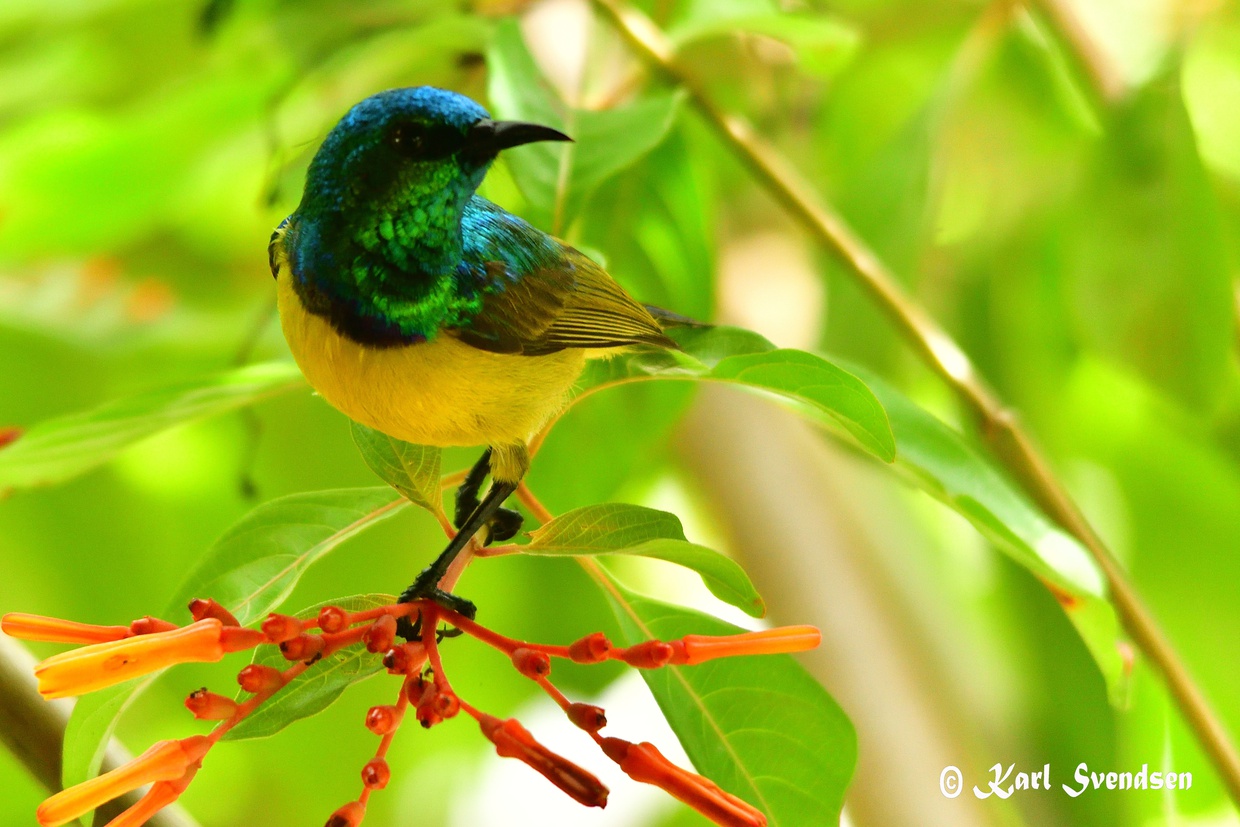 Male Collard sun bird in the garden at Kijongo Bay Resort.
Male Collard sun bird in the garden at Kijongo Bay Resort.
The sunbirds of Kijongo Bay Beach Resort are often seen flitting between the different flowering plants in the lush gardens.
So far, we have identified 4 different species of sunbird at Kijongo Bay Beach Resort, with 3 maybe’s still to be confirmed.
The following sunbirds have been identified at Kijongo; Collared sunbird, Scarlet- chested sunbird, Olive sunbird and the Amethyst sunbird.
We are working on additional confirmed sightings, to be able to say that we also have the following: Variable sunbirds, Purple-banded sunbirds and Mouse-coloured sunbirds.
Appearance
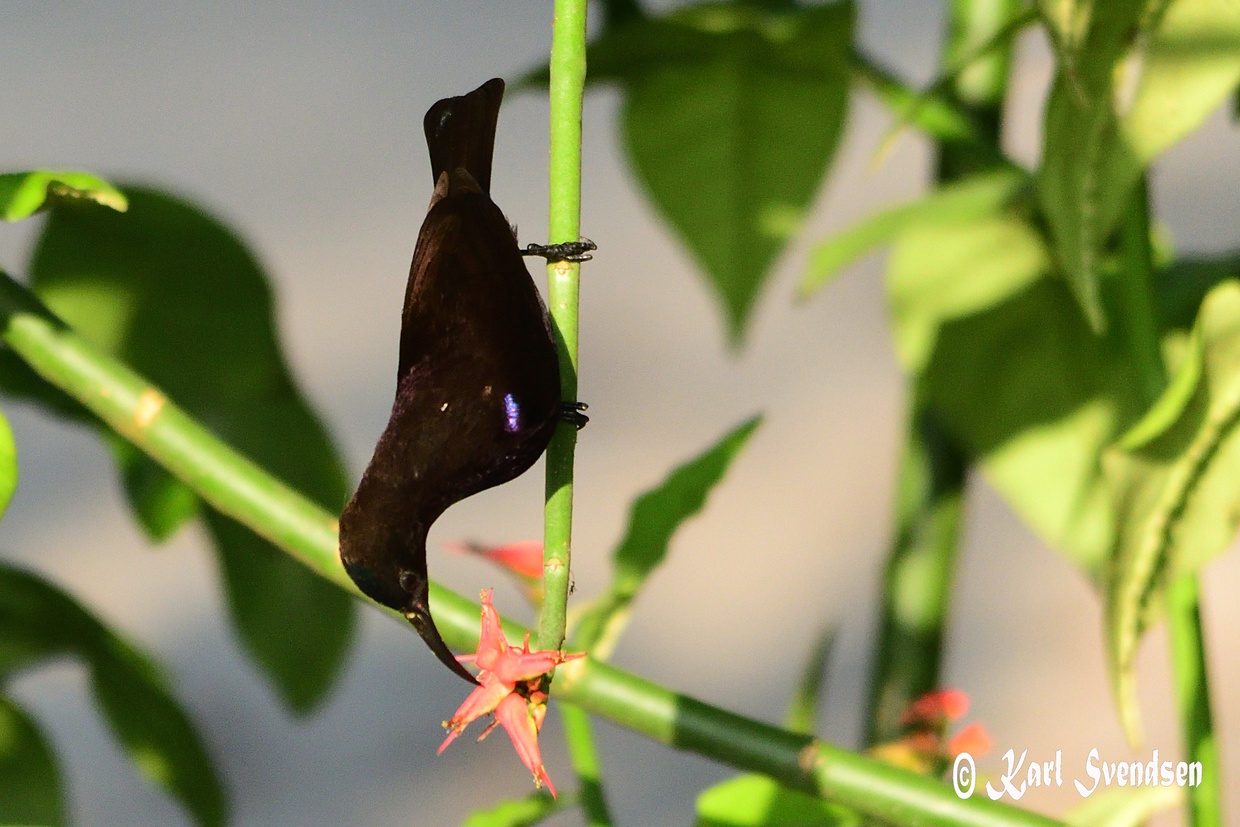 Amethyst sunbird showing its iridescent blue flash
Amethyst sunbird showing its iridescent blue flash
The male of many sunbird species, are normally a lot more brightly coloured, in comparison to their female counterparts, who are normally a drab olive-brown colour.
The sunbirds at Kijongo come in a variety of colours, from iridescent black, with an amethyst purple throat, such as the Amethyst sunbird, to the iridescent green back and upper breast, with a yellow vent of the Collared sunbird.
At the other end of the scale, the Olive sunbird, both male and female, lack any iridescence, and are a uniform olive colour, a lot like the females of most other sunbird species.
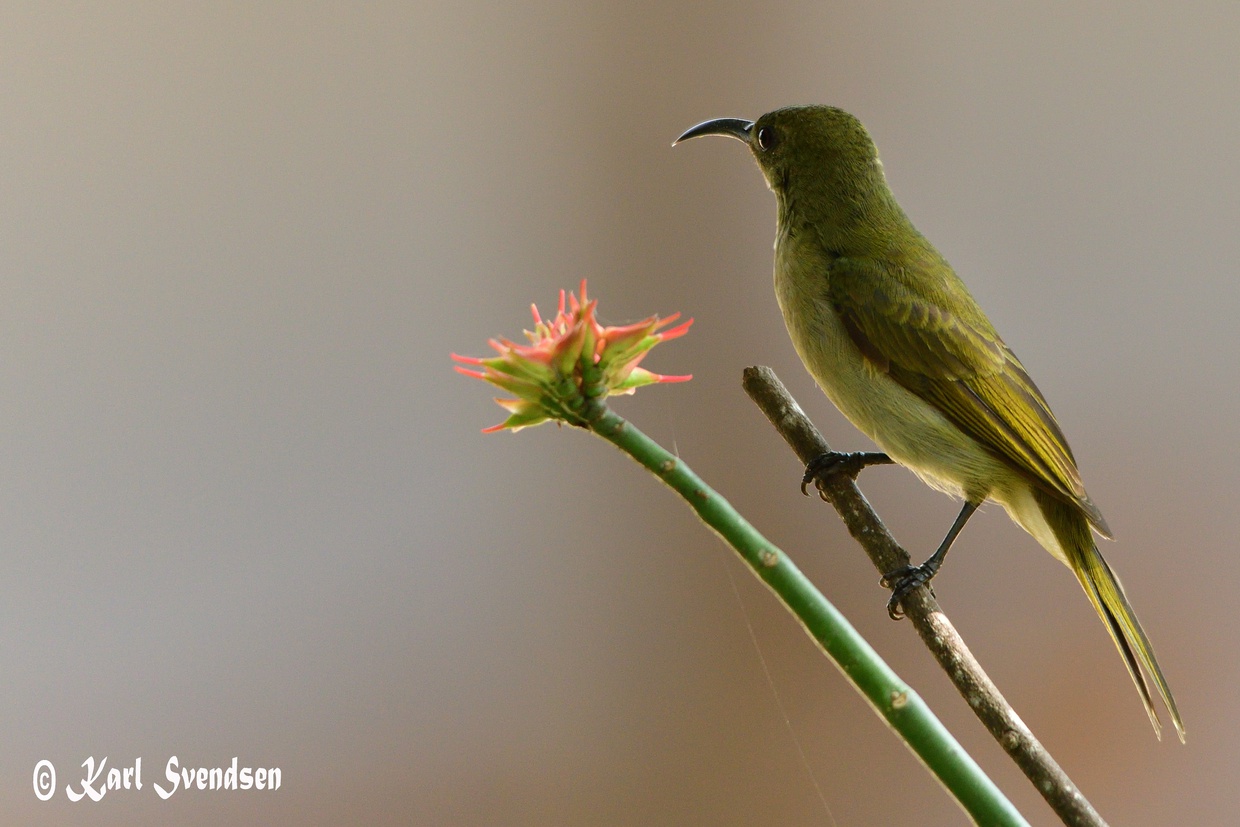 Drab colours of the Olive sunbird
Drab colours of the Olive sunbird
The sunbirds found in and around Kijongo Bay Beach Resort vary in size between 10 and 15 cm in length.
Diet
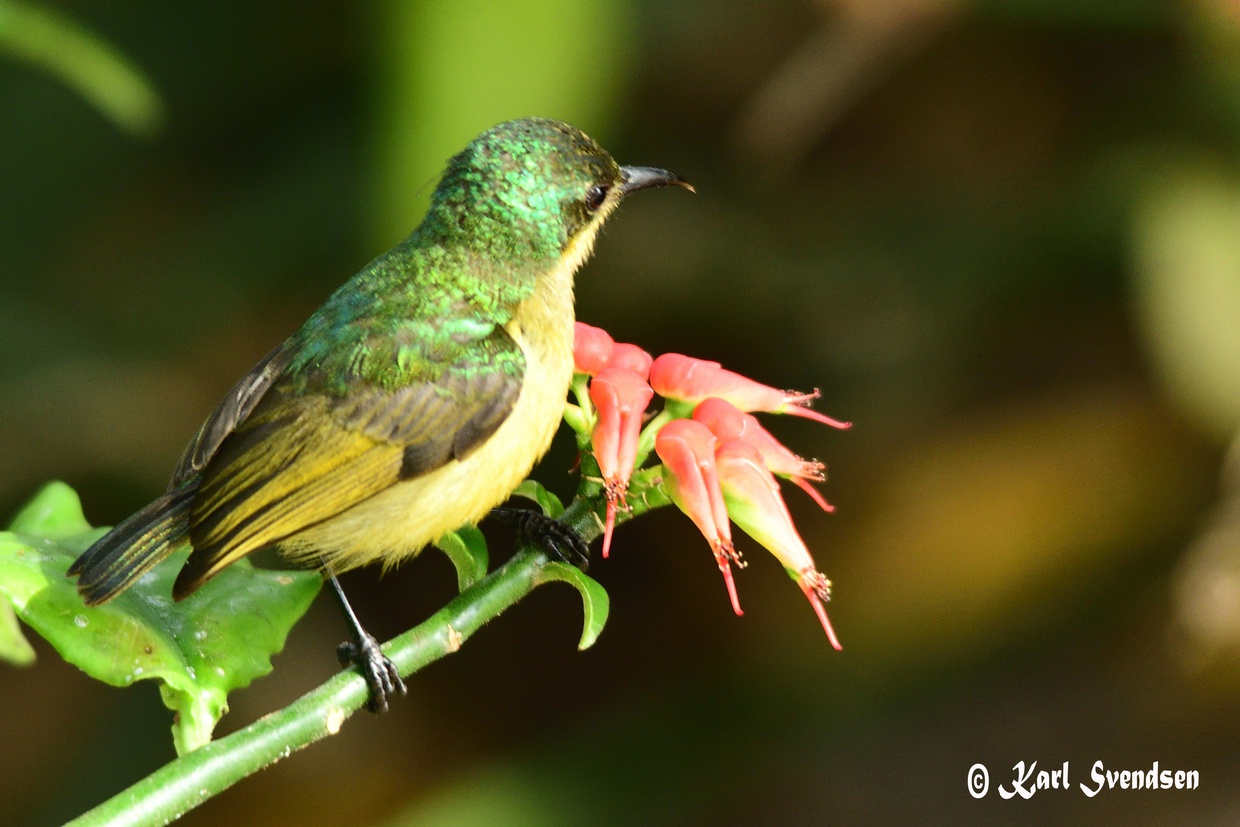 Female Collard sunbird
Female Collard sunbird
The majority of feeding undertaken by sunbirds is made up of nectar, with each species having slightly different plants that they visit, with up to 20 different plant genera visited by each species.
This type of feeding is vital to the pollination of a lot of plants.
Their diet is supplemented, on a smaller scale, with insects, spiders and the flesh of fruit and berries.
When feeding the young in the nest, the adults do catch a higher percentage of spiders and insects for their young.
Nesting
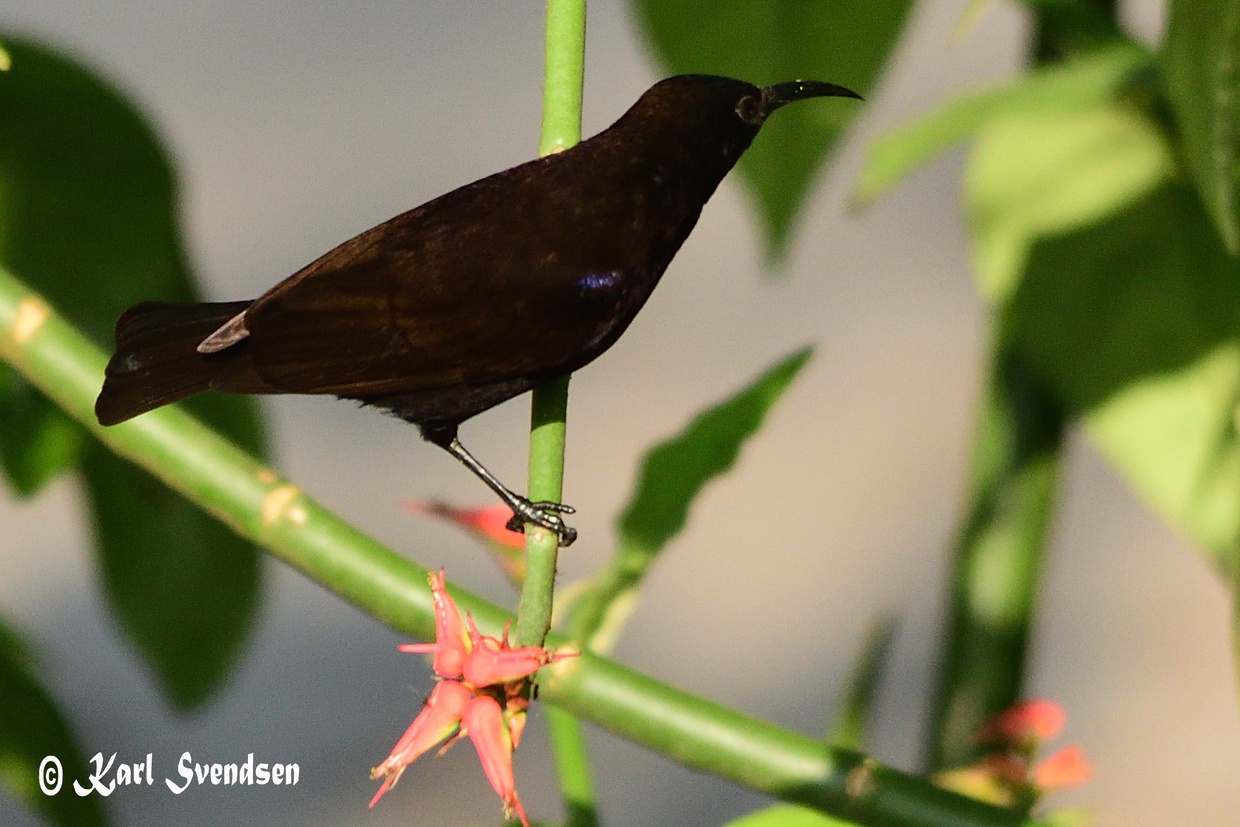 Male Amethyst sunbird.
Male Amethyst sunbird.
Generally, a purse shaped nest is built out of very small twigs and sticks, with a generous use of spider web to hold the nest together. This nest is enclosed with a short tunnel like entry, normally suspended from a thin branch. The nest is built by both sexes.
Between 2 and 3 eggs are laid, and then incubated by both sexes. The eggs take around 7 days to hatch and the chicks are fed by both parents for around 14 to 21 days, before leaving the nest.
Sunbird nests can be difficult to find, due to them being so well camouflaged.
Further Reading
Did you know that sunbirds are omnivorous? A sunbirds' diet is made up primarily of nectar, around 95%. They will, however, sometimes eat fruit and arthropods (insects and spiders). Sunbirds need to feed almost continually during the day to meet their high metabolic needs..
When visiting Kijongo Bay Beach Resort, one of the things our guests often comment on, is our incredible dawn chorus. Having well established gardens, with most of our bushes and trees being indigenous, we attract a lot of birds to Kijongo. This dawn chorus can range between subtle to loud, starting just before sunrise, to around a half hour after the sun rises. Bird song is a thing of beauty from the...
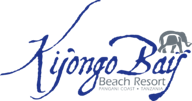







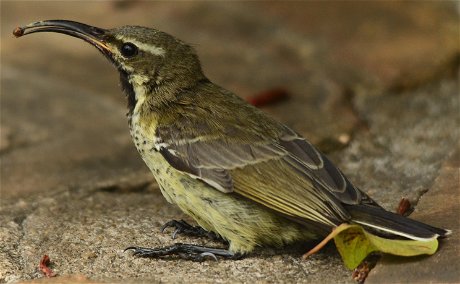
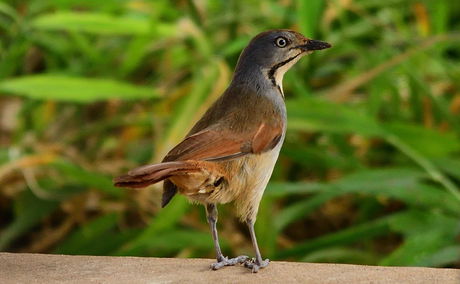
Share This Post